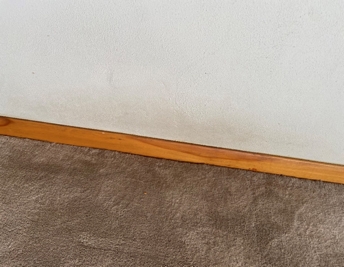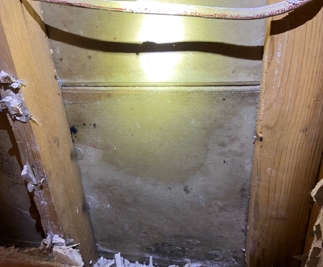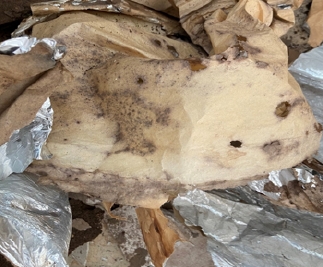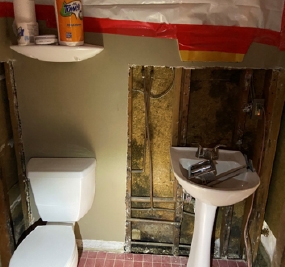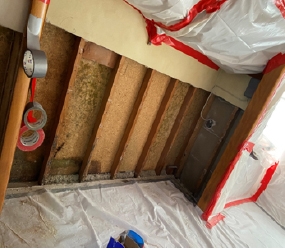Mold flourishes in places where moisture resides, including areas that the average homeowner cannot see. Common areas where it grows is usually found include attics and basements, rafters, ceiling tiles, and bathroom vanities where leaks may occur. On a recent project, a homeowner had visible mold growth, which was caused by a ceramic tile heated floor. Unbeknownst to the homeowner, the copper pipes under the tile used to heat the floor sprung a leak; mold began growing inside the wall cavity, eventually presenting itself in the form of paint bubbles.
However, mold was not the only issue that the homeowner was faced with; the other matter at hand pertained to the wall composition. The walls were drywall covered with a decorative plaster paint; this decorative paint contained asbestos, which is hazardous when fibers become airborne. In this article we want to cover how mold can grow rather quickly along with ways to prevent it from growing and what can be done to prevent and remediate such.
The main indication of mold growth inside wall cavities is the discoloration of the wall itself; unfortunately, when this happens, the growth has been growing for some time. This discoloration can appear as a light shadow or dirt on the wall. A musty and/or earth-like smell within a home is another indication of a fungal problem. Mold in a residence not only raises health concerns but it also jeopardizes the integrity of the structure; it consumes the substrate it grows on; dry rot for example, is caused by mold consuming the wood. It has the potential to damage just about any surface it grows on.
The resolution is not to simply stop the water and remove the substrate which it was growing on; it goes beyond that. For a homeowner, knowing how to handle this can be just as problematic as the mold itself. The first step to take would be to call a professional who can thoroughly check your home.
In these situations, it is often best to contact a professional, as mold can cause a variety of health issues from type I and II allergies to triggering asthma attacks. In the above instance, mold was just one of the concerns. Asbestos exposure can increase the risk of lung cancer and other similar respiratory diseases. If you are experiencing unanswered adverse health effects or suspect mold in your home, don’t hesitate to call us. We travel throughout the tri-state region and are ready to help you eliminate the issue from the source!
Share this article:


